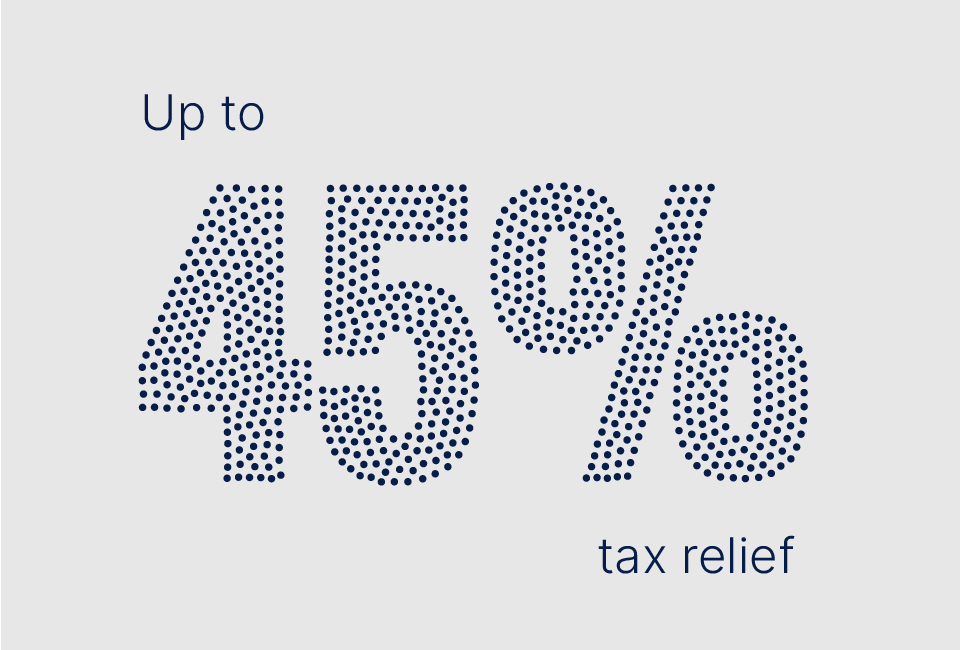
Pension contributions
How much can I contribute to my pension?
How much you can pay into your pension depends on your personal circumstances.
Your pension contributions are limited by the pension annual allowance which is £60,000 each tax year for most people. Any contributions made by you and your employer count towards it, as does any basic-rate tax relief added by the government.
If you’re a UK resident under the age of 75, you can get pension tax relief on what you pay in, even if you don’t work or pay tax.
To get tax relief, your personal contributions can’t be any higher than your earnings, or £3,600 if this is greater. If you want to contribute above the amount you earn, your employer might be able to make an employer pension contribution, although these are still subject to the annual allowance.
Keep in mind that pension and tax rules can and do change, and any benefits will depend on your circumstances.
Pension contribution example
If you wanted to contribute £35,000 gross into a pension, then you would only have to pay in £28,000 as the government will automatically add basic rate tax relief (20%) of £7,000.
Use the pension tax relief calculator to find out how much tax relief you could get.
Pension contribution example
If you wanted to contribute £35,000 gross into a pension, then you would only have to pay in £28,000 as the government will automatically add basic rate tax relief (20%) of £7,000.
Use the pension tax relief calculator to find out how much tax relief you could get.
Understanding your pension allowances
Annual pension allowance
The pension contribution limit is set at £60,000, although this can vary depending on your earnings.
Tapered annual allowance
If you're an additional-rate taxpayer, your annual allowance may be tapered down to as little as £10,000.
Money Purchase Annual Allowance
After flexibly accessing your pension, your contributions to money purchase pensions are limited to £10,000 per tax year.
The lump sum, lump sum and death benefit and overseas transfer allowances
The lump sum, lump sum and death benefit and overseas transfer allowances have replaced the lifetime allowance.
Increase your allowance with 'carry forward'
Take advantage of unused pension annual allowance from the previous three tax years, allowing you to potentially contribute up to £220,000 including tax relief.
We keep track of all the latest updates to pension and tax rules so you don't have to. View our rule updates tracker.
Employer pension contributions
Having your employer contribute to a pension can be one of the most tax efficient ways to grow your retirement savings. We take a look at how employer contributions work and why they're so effective.
What are the benefits of contributing to a pension?
- Tax-free investing
Grow your money free of UK income and capital gains tax. - Shelter up to £60,000
And get up to 45% tax relief in your pension each tax year. - Pass on wealth tax efficiently
Pensions can be passed on free from income and Inheritance Tax (IHT). Although IHT pension rules are set to change in 2027.
Pension and tax rules can change and benefits depend on your circumstances. Rates and bands for Scottish taxpayers may be different. Investments can rise and fall in value, so you could get back less than you invest.

How to add money to your SIPP
Adding money to your HL Self-Invested Personal Pension (SIPP) can help you make the most of your pension annual allowances and any tax relief you could be entitled to.
The quickest way to do this is online. You’ll just need your debit card and bank account details to hand.
Make a lump sum payment
You can make a one-off lump sum payment from as little as £100. You only need to pay £80, and we’ll claim 20% tax relief to take the total payment to £100.
Start or increase a regular investment
Set up monthly payments from as little as £25 (pay £20, and we’ll claim £5 in tax relief). Or increase an existing direct debit instruction.
Frequently asked questions
Pension essentials

How much should I pay into my pension?
Not sure how much to pay into your pension? Here we explore what to consider when deciding how much to contribute, and why it pays to start early.

Can I still contribute to a pension after retirement?
We look at the reasons why you should consider paying into your pension even if you’ve already taken money out or stopped working.

Pension calculator
Find out if you're on track to get the income you want in retirement.

Boring Money Best Buys 2025

Boring Money Best Buys 2025

Investing in the Web's Global Broker Awards 2024
Help and support
Take a look at our most frequently asked questions for quick answers.
If you need more assistance or have specific questions, please contact us.